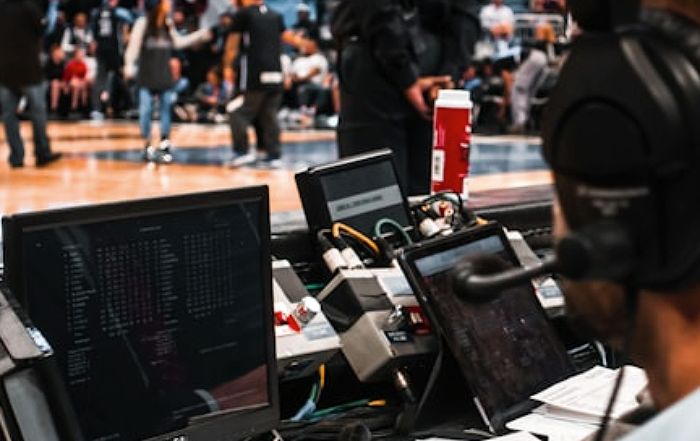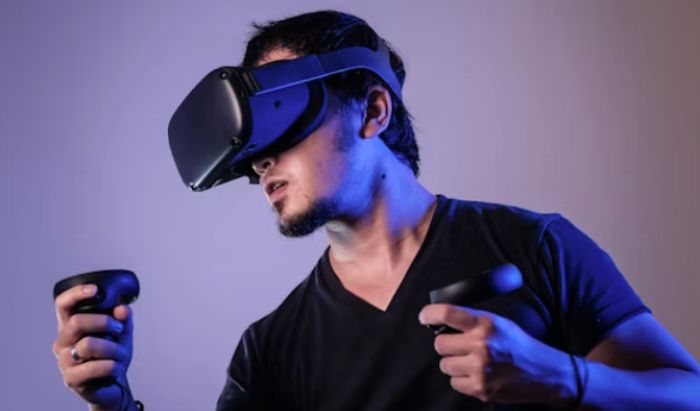In the twenty-first century, the sports industry has increasingly become a focal point for environmental innovation, with stadiums emerging as living testaments to a greener future. Once seen purely as venues for mass entertainment and national pride, modern sports stadiums have evolved into architectural masterpieces that embody ecological responsibility, social inclusivity, and cutting-edge technology. The movement toward sustainability is no longer a niche effort—it is a defining principle shaping the way nations build, host, and experience global sports. In 2025, sustainable stadiums stand as both functional arenas and powerful statements of environmental consciousness, redefining how humanity views the intersection of design, performance, and planetary stewardship.
From the early pioneering days of Germany’s Allianz Arena to the futuristic vision of Japan’s National Stadium, the drive toward reducing carbon emissions and optimizing energy use has led to a renaissance in sports architecture. This shift aligns with broader global initiatives such as the Paris Agreement and the United Nations Sustainable Development Goals, where construction, energy efficiency, and community engagement are central themes. Modern stadiums are no longer built just to impress spectators with their size and spectacle—they are engineered to serve communities, conserve resources, and sustain ecosystems for decades to come.
Learn more about how sustainability influences sports and global culture.
The Global Push Toward Green Sports Infrastructure
Across the world, nations are investing billions into sustainable infrastructure, recognizing that the environmental impact of sports events can no longer be ignored. Major governing bodies such as FIFA, UEFA, and the International Olympic Committee (IOC) have implemented environmental standards for new venues, mandating efficient energy systems, waste reduction strategies, and biodiversity preservation. These regulations have reshaped how stadiums are conceived, constructed, and operated.
In Europe, countries like the United Kingdom, Germany, and France have taken the lead in designing eco-conscious stadiums that not only meet but exceed green certification standards. The Tottenham Hotspur Stadium in London, for instance, integrates energy-efficient lighting and advanced recycling systems, setting a new benchmark for multipurpose venues. Meanwhile, Germany’s Allianz Arena, with its advanced LED facade and geothermal heating systems, demonstrates how aesthetic brilliance can coexist with sustainability. In France, the Stade de Bordeaux, designed by Herzog & de Meuron, showcases minimal environmental impact through its lightweight structure and energy-efficient materials.
Beyond Europe, Australia, Japan, and Qatar have made significant investments in sustainable sports infrastructure. The Khalifa International Stadium in Doha was retrofitted with high-efficiency cooling systems to mitigate desert heat, while Japan’s National Stadium, rebuilt for the Tokyo Olympics, incorporated natural ventilation, recycled timber, and locally sourced materials. These architectural achievements prove that sustainability can enhance rather than hinder functionality and fan experience.
Learn more about the growing business of sustainable sports venues.
Engineering Innovation: The Technological Backbone of Green Stadiums
Technology is the cornerstone of sustainable sports architecture. With advancements in materials science, renewable energy, and digital monitoring, the next generation of stadiums operates like intelligent ecosystems. At the forefront of this revolution are innovations in energy generation, waste management, and smart monitoring systems.
Renewable energy plays a transformative role in this ecosystem. Solar panels, wind turbines, and even kinetic flooring are now standard components of eco-stadium designs. Amsterdam’s Johan Cruijff Arena, for example, generates much of its power from an on-site solar installation and stores it in a second-life battery system made from recycled Nissan LEAF electric vehicle batteries. This innovation not only reduces emissions but also ensures that the stadium contributes to the surrounding power grid during peak demand periods. Similarly, the Mercedes-Benz Stadium in Atlanta, home to Atlanta United FC and the NFL’s Falcons, achieved LEED Platinum certification through the integration of rainwater capture systems and 4,000 solar panels that offset substantial operational energy use.
Smart systems enable real-time tracking of energy consumption, water use, and crowd flow. Data analytics platforms developed by firms such as Siemens, Schneider Electric, and Johnson Controls allow stadium operators to make data-driven decisions that optimize sustainability performance. By leveraging Internet of Things (IoT) networks, these systems can adjust lighting, ventilation, and temperature dynamically based on occupancy and environmental conditions. This creates not only a more comfortable environment for fans but also a drastically lower energy footprint.
Discover how technology continues to influence sports innovation and sustainability.
🌍 Evolution of Sustainable Stadiums
From pioneering initiatives to carbon-negative futures
Materials, Design, and Circular Construction
A sustainable stadium begins long before the first match is played. The materials chosen, the construction process adopted, and the eventual plan for reuse or recycling all determine the long-term ecological impact of the venue. Modern architects are embracing circular economy principles, ensuring that each component of a stadium’s life cycle contributes to environmental regeneration rather than depletion.
One notable example is The Eco Park Stadium in Gloucestershire, designed by Zaha Hadid Architects for Forest Green Rovers, often cited as the world’s greenest football club. Constructed almost entirely from sustainably sourced timber, the stadium is a symbol of what fully renewable architecture can look like in sports. It is designed for minimal carbon output, and the surrounding parkland integrates biodiversity corridors, wetland areas, and renewable energy installations. The project highlights a philosophy that architecture should coexist with nature rather than compete against it.
In Scandinavia, where environmental design is deeply embedded in culture, projects like Stockholm’s Friends Arena and Copenhagen’s Parken Stadium have adopted extensive recycling strategies and modular components that can be disassembled and reused in future developments. Similarly, Australia’s Melbourne Rectangular Stadium (AAMI Park) utilizes an innovative bioframe design that reduces the need for steel and concrete while maximizing light and airflow. This structural ingenuity reduces embodied carbon while delivering striking visual appeal.
Learn more about circular innovation in sports environments and sustainability.
Fan Experience Meets Environmental Awareness
The most striking transformation brought about by sustainable stadiums is the seamless integration of environmental responsibility into the fan experience. For decades, the excitement of live sports events was overshadowed by the waste and energy consumption associated with massive crowds, single-use plastics, and intensive lighting. In 2025, however, sustainability and spectator enjoyment coexist as complementary goals rather than opposing forces. The rise of intelligent design, renewable energy systems, and eco-conscious hospitality has created a new standard for modern sports culture — one where every game contributes to global well-being rather than environmental harm.
At the Mercedes-Benz Stadium in Atlanta, fans witness sustainability in action. Water refill stations replace disposable bottles, waste bins are smartly separated for composting and recycling, and LED lighting shifts color dynamically during events while consuming minimal power. The venue’s transparent energy dashboards display real-time data on electricity generation and water savings, turning sustainability into an educational experience. Likewise, the Tottenham Hotspur Stadium features a food waste collection system that converts organic material into renewable energy, and even its beer cups are fully recyclable, reinforcing environmental messaging at every level of fan engagement.
In Japan, fan engagement reaches another level at the National Stadium, where sustainability blends with traditional culture. Designed by Kengo Kuma, the stadium uses natural ventilation and cedar wood sourced from 47 prefectures to symbolize national unity. The experience of attending a match becomes one of cultural pride and ecological respect, showing that sustainability can enhance rather than limit emotional connection. Fans are not just spectators—they are participants in a shared ecological mission.
For readers who value the intersection of environmentalism and sporting culture, visit Sportsyncr’s Environment Section to explore how design, fans, and athletes are shaping a greener future.
Social Responsibility and Community Engagement
Sustainable stadiums are also redefining the role of sports architecture in community life. No longer isolated monuments, they are now designed as dynamic public spaces that benefit surrounding neighborhoods. Many stadiums operate as community hubs that offer recreation, education, and cultural engagement on non-event days. This social integration amplifies the value of sports beyond competition, creating spaces for social well-being and environmental awareness.
The Etihad Stadium in Manchester, home of Manchester City FC, has become a blueprint for how sports complexes can serve as urban regeneration catalysts. Through partnerships with local councils and sustainability organizations, the stadium supports social inclusion programs, job creation, and youth sports initiatives. In Germany, Allianz Arena partners with local energy suppliers to educate students about renewable technologies, while Forest Green Rovers’ Eco Park provides community workshops on organic farming, vegan nutrition, and renewable energy literacy. These initiatives show that sustainable sports architecture is not just about buildings — it’s about people, education, and cultural transformation.
In North America, similar community-driven approaches are gaining traction. BMO Field in Toronto and Levi’s Stadium in California both host environmental awareness programs that engage young fans in hands-on sustainability learning. Levi’s Stadium, the first LEED Gold–certified NFL venue, also features a 27,000-square-foot green roof that improves air quality and biodiversity while doubling as an urban park. This blending of ecological function and social utility exemplifies how stadiums can contribute meaningfully to urban ecosystems.
Learn more about community impact and sports leadership on Sportsyncr’s Culture page.
Economic and Environmental Benefits of Sustainable Design
Sustainable stadiums are not only environmentally sound but also economically intelligent. The initial investment in green materials, smart systems, and renewable infrastructure often yields long-term financial returns through reduced operational costs, brand enhancement, and new sponsorship opportunities. For investors and governments, this dual advantage of economic performance and environmental responsibility has made sustainable stadiums a compelling model for future development.
Energy-efficient designs drastically lower power bills. For example, the Johan Cruijff Arena in Amsterdam, through its solar and battery system, saves hundreds of thousands of euros annually on energy costs. Water recycling systems reduce municipal water usage, while modular construction techniques shorten building time and minimize waste. Beyond operational savings, these venues attract new revenue streams from sustainability-oriented sponsors and events. Companies such as Adidas, Nike, and Coca-Cola increasingly prioritize partnerships with environmentally conscious venues as part of their ESG (Environmental, Social, and Governance) commitments.
Cities that host green stadiums also gain reputational and tourism advantages. The Qatar World Cup 2022 venues, designed with modular and recyclable components, demonstrated how sustainable architecture can improve a nation’s global image. As tourism industries recover post-pandemic, sustainable infrastructure plays a crucial role in attracting eco-minded travelers and businesses. This growing economic synergy between sustainability and sports tourism is driving governments worldwide to integrate environmental policies into sports infrastructure planning.
For deeper economic insights into sports infrastructure and green investment trends, explore Sportsyncr’s Business section.
The Role of Digital Twins and AI in Stadium Optimization
In 2025, artificial intelligence (AI) and digital twin technology are transforming the management of sustainable stadiums. These tools allow engineers and operators to create virtual replicas of stadiums that simulate and predict real-world behavior. Through this, operators can monitor everything from air circulation to crowd density, energy flow, and emergency response scenarios with pinpoint accuracy.
Companies like IBM, Microsoft, and Siemens have pioneered the use of AI-driven predictive maintenance in sports facilities. By integrating IoT sensors across HVAC systems, lighting grids, and crowd control points, digital twins allow stadium operators to anticipate maintenance issues before they occur, reducing resource waste and downtime. The result is a highly efficient, resilient, and adaptive infrastructure.
In Singapore, where smart city principles are deeply ingrained, the Singapore Sports Hub represents one of the most advanced applications of data-driven sustainability. The complex’s intelligent control systems manage lighting and cooling dynamically, optimizing energy use based on weather conditions and event type. Similarly, South Korea’s Incheon Asiad Main Stadium employs AI to regulate ventilation and temperature, reducing its carbon footprint while maintaining superior comfort for athletes and fans.
The integration of AI into architecture marks the next phase of green stadium innovation. It not only improves energy performance but also deepens the understanding of human interaction with space — turning sustainability into a living, evolving process.
Stay updated on technological transformations in sports at Sportsyncr Technology.
Renewable Energy Ecosystems Powering Modern Stadiums
The rise of renewable energy as the foundation of sustainable sports architecture has fundamentally transformed how stadiums operate, ensuring that these monumental spaces no longer serve as energy sinks but as power producers. Across continents, stadiums have become hubs of solar, wind, geothermal, and kinetic energy—each innovation bringing sports architecture closer to achieving net-zero carbon or even carbon-negative performance standards.
The Amsterdam Johan Cruijff Arena, a beacon of innovation, runs primarily on solar energy generated from over 4,200 panels, complemented by a megawatt-scale battery system repurposed from Nissan electric vehicles. This not only ensures uninterrupted power during events but allows the stadium to feed surplus energy into the city grid, transforming it into a micro-energy hub for Amsterdam’s urban network. In Spain, the San Mamés Stadium in Bilbao integrates geothermal heating and cooling, reducing fossil fuel dependency while maintaining ideal indoor temperatures year-round.
Meanwhile, in Australia, the Adelaide Oval has invested in high-efficiency lighting and rooftop solar installations that contribute a significant percentage of the stadium’s total electricity demand. The Melbourne Cricket Ground (MCG), one of the world’s largest stadiums, operates on 100% renewable electricity sourced from local wind farms and solar networks, making it a role model in large-scale decarbonization. These initiatives showcase a growing global consensus: renewable energy is not merely an add-on—it is the structural backbone of future-ready sports venues.
Learn more about the intersection of sports and renewable innovation.
Global Case Studies of Architectural and Environmental Excellence
The era of sustainable stadiums has produced landmark examples across all major continents. Each project reflects local culture, climate, and environmental priorities while uniting around a shared commitment to sustainability and innovation.
In Europe, the Allianz Arena in Munich continues to evolve as one of the continent’s greenest arenas. Its LED façade consumes 60% less energy than traditional lighting systems, while water recycling and efficient insulation reduce operational carbon output. In Paris, the Accor Arena recently underwent a massive renovation to improve insulation, implement zero-waste catering operations, and integrate electric vehicle (EV) infrastructure for fans and staff.
North America offers equally compelling models. The Climate Pledge Arena in Seattle, home to the Seattle Kraken, is officially the world’s first arena targeting net-zero carbon certification. Powered entirely by renewable energy and committed to eliminating single-use plastics, it even offsets travel-related emissions from players and fans. Similarly, Levi’s Stadium in California operates as a living laboratory for sustainable design, utilizing reclaimed water, recycled materials, and a green roof that doubles as an ecological learning space.
In Asia, the National Stadium of Japan, Singapore Sports Hub, and Incheon Asiad Main Stadium exemplify how high-density nations innovate within tight spatial and environmental constraints. Singapore’s Sports Hub integrates passive cooling, natural ventilation, and rainwater harvesting to adapt to the tropical climate efficiently. The Japan National Stadium, designed with a deep respect for nature, blends wood, greenery, and cutting-edge technology into a harmonious example of biophilic architecture.
Africa and South America are now emerging as new frontiers in sustainable stadium development. The Cape Town Stadium, originally built for the 2010 FIFA World Cup, has since undergone energy retrofits to minimize its environmental footprint, while Brazil’s Arena da Amazônia stands as an architectural tribute to the Amazon rainforest—constructed from recycled materials and powered by solar energy. These regions demonstrate how sustainability is becoming a unifying global language in sports architecture.
For more on sustainability and sports leadership, explore Sportsyncr World.
From Carbon-Neutral to Carbon-Negative: The Next Frontier
While carbon neutrality remains the primary target for most modern stadiums, the next generation is setting its sights on carbon-negative performance—meaning these facilities will remove more carbon from the atmosphere than they emit. This ambitious shift is being driven by new technologies in carbon capture, advanced bio-materials, and regenerative landscaping.
Architects are increasingly using carbon-sequestering concrete, produced by companies such as CarbonCure and Heidelberg Materials, which infuses captured CO₂ directly into concrete mixtures. Similarly, bio-based materials like hempcrete and bamboo composites are reducing embodied carbon in construction while improving thermal efficiency. The Forest Green Rovers’ Eco Park Stadium remains a symbol of this movement, combining carbon-negative materials with fully organic grounds maintenance, including the use of electric mowers powered by solar panels.
Regenerative landscaping adds another layer to carbon reduction. Many stadiums are now integrating urban reforestation and green corridors that restore biodiversity. The Mercedes-Benz Stadium in Atlanta planted hundreds of trees in surrounding communities as part of its green certification process, while Tottenham Hotspur Stadium maintains a partnership with The Woodland Trust to offset carbon emissions through sustainable forestry projects.
This new philosophy represents a profound reimagining of the stadium as a restorative force rather than a passive structure—a living organism within its environment that actively contributes to ecological renewal.
Learn how regeneration is redefining sports and environmental ethics.
The Cultural Power of Sustainability in Sports
Beyond architecture, sustainability has become a cultural statement that defines how fans perceive their teams and how organizations position their brands globally. A new generation of sports fans—environmentally conscious, digitally connected, and socially aware—demands that the clubs and stadiums they support reflect their values. This has transformed sustainability into a core pillar of brand identity and fan loyalty.
Major organizations like FIFA, UEFA, and IOC now require environmental impact reports for tournaments and host cities. The International Olympic Committee, for instance, mandates that all future Games be climate positive by 2030, setting new benchmarks for the sports industry. Meanwhile, clubs like Real Madrid, Manchester City, and Paris Saint-Germain actively promote sustainability campaigns as part of their global outreach.
Sponsorship dynamics have evolved accordingly. Brands such as Adidas, Nike, and Puma now emphasize circular manufacturing and renewable sourcing in their partnerships with teams and venues. Sustainable initiatives resonate deeply with fans—whether it’s Adidas producing kits from Parley Ocean Plastic, or Nike manufacturing footwear from recycled carbon emissions. These innovations turn sustainability from a regulatory obligation into a cultural movement that strengthens global sports communities.
The connection between sports, culture, and sustainability extends beyond professional leagues. Grassroots movements, youth academies, and local sports organizations worldwide now advocate for eco-conscious behavior, using stadiums as educational platforms. By linking sports passion to environmental purpose, sustainable stadiums cultivate a new kind of fan identity—one where cheering for the team also means supporting the planet.
Discover how cultural shifts are shaping the future of sports sustainability and identity.
The Future of Sustainable Stadiums: Intelligent Cities and Integrated Urban Ecosystems
As cities evolve into intelligent, data-driven ecosystems, the role of sustainable stadiums is expanding far beyond the confines of sports. In 2025, these venues are no longer standalone structures—they are anchors within smart urban systems, influencing energy distribution, transportation, and even housing design. The world’s most advanced cities, from Singapore and Copenhagen to San Francisco and Tokyo, are now planning stadiums as multi-functional community nodes that connect seamlessly with public transit, renewable grids, and circular economies.
The concept of the “smart stadium” integrates urban analytics, digital infrastructure, and sustainable architecture into a single ecosystem. For example, the Singapore Sports Hub is integrated with the city’s transport network, allowing over 80% of visitors to arrive via public transit or bicycle. Its intelligent systems monitor energy, waste, and crowd movement in real time, feeding valuable data into city-wide sustainability dashboards. Similarly, Copenhagen’s Parken Stadium connects with the city’s district heating system, allowing waste heat from matches and concerts to be recycled back into residential energy supplies.
In North America, Levi’s Stadium in California has been instrumental in advancing the relationship between smart cities and sports infrastructure. Equipped with over 1,200 connected sensors, it tracks environmental conditions and resource usage, contributing to the city’s sustainability data. Its location within Silicon Valley further exemplifies the fusion of sports, technology, and ecology. Future stadiums will likely expand these capabilities—operating as energy-sharing nodes, rainwater purification hubs, and biodiversity sanctuaries that actively support urban regeneration.
For insights into how sports intersect with global technology and innovation, visit Sportsyncr Technology.
Green Transportation and Fan Mobility
A truly sustainable stadium experience extends far beyond the walls of the arena. Transportation accounts for a large percentage of the carbon footprint of any sporting event, often surpassing energy consumption within the venue itself. The next frontier in sports sustainability lies in decarbonizing fan mobility, integrating green public transport, electric vehicle infrastructure, and smart mobility systems into the event experience.
Cities such as London, Munich, and Oslo are leading the way by ensuring that stadium access aligns with broader clean transport strategies. The Tottenham Hotspur Stadium encourages fans to use the London Underground and has eliminated on-site car parking to reduce congestion and emissions. In Germany, Allianz Arena connects directly to the Munich U-Bahn, with cycling paths and EV charging stations surrounding the facility. Meanwhile, Los Angeles’ SoFi Stadium is pioneering shared electric shuttles and autonomous transport systems that run on renewable electricity.
In Asia, cities like Tokyo and Seoul are redefining stadium mobility through digital integration. Fans use mobile platforms powered by Naver, SoftBank, or Google Maps to plan multimodal routes that minimize emissions and optimize travel time. Singapore is exploring the next evolution—AI-managed transportation that dynamically adjusts rail frequency, bike-sharing availability, and EV charging schedules on match days. These innovations are proof that sustainable design must be holistic—addressing the full lifecycle of the fan journey from doorstep to seat.
Learn more about the relationship between sports, travel, and environmental transformation.
Economic Legacy and Long-Term Sustainability
The longevity of sustainable stadiums depends not only on technology but also on economic resilience and adaptability. Traditional stadiums often faced financial difficulties after major events—such as the Olympics or World Cup—leaving behind underutilized “white elephants.” In contrast, sustainable stadiums are designed for continuous, diversified use. They integrate commercial spaces, education centers, wellness facilities, and cultural venues, ensuring profitability and community benefit throughout the year.
The Olympic Park in London remains a leading model in this regard. Post-2012, it was transformed into Queen Elizabeth Olympic Park, a vibrant mixed-use area that includes residential districts, retail spaces, public parks, and tech incubators. The stadium itself, now home to West Ham United, continues to generate steady economic and social returns. Similarly, Sydney Olympic Park has become one of Australia’s most visited precincts, hosting thousands of community and cultural events annually.
Qatar’s Stadium 974, built from recycled shipping containers, introduced a new paradigm of modularity and mobility in stadium design. After the 2022 FIFA World Cup, the structure was disassembled, proving that large-scale sports infrastructure can have a second life elsewhere. This model of portable architecture could become the cornerstone of sustainable sports planning in emerging economies, enabling developing nations to host global events without long-term environmental or financial burdens.
Explore more on sports business evolution at Sportsyncr Business.
Integrating Biodiversity and Wellness into Sports Architecture
The connection between environmental design and human wellness is gaining recognition as a defining theme of the 2020s. Modern stadiums are increasingly designed with biophilic principles, integrating greenery, water features, and natural light to enhance both environmental health and spectator well-being. This approach not only improves air quality but also fosters a sense of calm, community, and connection to nature within the typically intense atmosphere of sports events.
Stadiums such as the Japan National Stadium and Forest Green Rovers’ Eco Park exemplify this union between ecology and emotion. Their design integrates trees, gardens, and open-air circulation systems, reflecting an understanding that sustainability is as much about people as it is about the planet. In tropical climates, biophilic design also serves a practical purpose—providing natural shading and reducing reliance on artificial cooling systems.
The trend extends to athlete facilities as well. Training centers within sustainable stadium complexes are now incorporating wellness architecture, including natural ventilation, filtered lighting, and smart recovery technologies that monitor air quality and humidity. These innovations enhance athletic performance while promoting physical and mental health. The fusion of sport, sustainability, and wellness signals a profound cultural shift where performance and planet coexist in harmony.
For further reading on wellness design and physical performance, visit Sportsyncr Health and Sportsyncr Fitness.
The Legacy of Environmental Innovation in Sports
As 2025 unfolds, sustainable stadiums have become powerful symbols of a new era—one where environmental innovation, architectural beauty, and social purpose converge. The evolution of sports venues from carbon-intensive structures to circular, regenerative, and intelligent systems represents one of the most significant transformations in global architecture. It redefines how humanity celebrates competition, community, and collective responsibility.
The legacy of this transformation will extend far beyond sports. Each sustainable stadium—whether in London, Munich, Tokyo, or São Paulo—is a living laboratory, teaching architects, policymakers, and citizens how to coexist sustainably with the planet. These arenas have become global classrooms for environmental education, community empowerment, and technological experimentation. They reflect the human capacity to learn from the past, innovate in the present, and protect the future.
In this context, sustainability in sports is no longer a trend—it is the foundation of how future generations will play, celebrate, and gather. From energy generation and green construction to fan education and biodiversity preservation, the world’s stadiums are proving that every roar of the crowd can echo in harmony with the Earth’s rhythms.
For the latest updates on sustainable sports architecture and green innovation, explore Sportsyncr News and Sportsyncr Environment.








